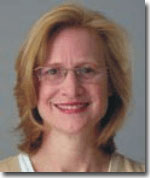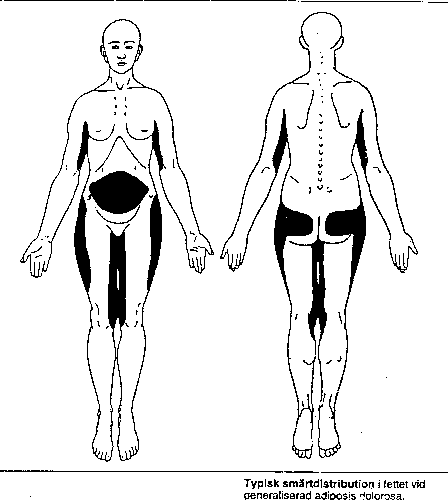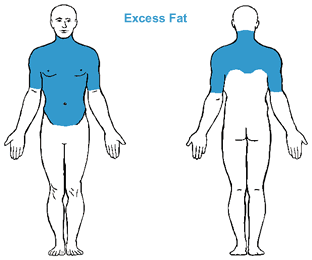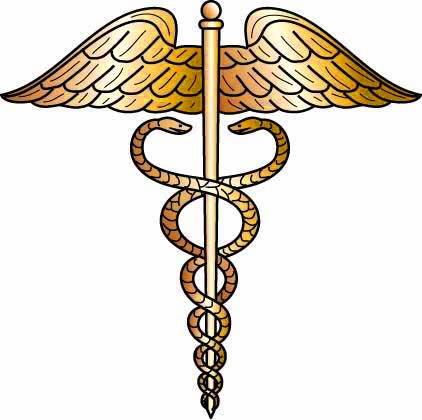Over the years, the vague explanation of “a metabolism problem” given as an explanation for being overweight often sounded suspect. Causes of obesity, excepting overconsumption, are not well understood by the average person and often difficult even for medical personnel to discern. Surely these overweight people's health, victims of what they describe as a faulty metabolism, would straighten out if they found the right combination of diet, exercise and lifestyle. So sometimes an explanation involving metabolism seemed or seems an excuse for lack of effort or discipline. One way or another, overweight people are some of the most judged people on earth because appearance is the first thing we notice when we see someone. And, as we all know and hear repeatedly, size matters. Given the emphasis put on youth, beauty, and appearance in contemporary culture, conditions affecting these factors are the last thing anyone wants to think of as an affliction that they or anyone they love could acquire.
Is there really such a thing as a “fat disorder”?
To the people doing research and investigations nationally and internationally, absolutely “fat disorders” exist. And, there are a number of these rare, or “orphan” diseases. In the U.S., one of the people leading this research is Karen Herbst, Ph.D., M.D., an Endocrinologist at the University of California, San Diego and Director of the Weight Control Clinic in the VA San Diego Health Care System. She attended the University of Iowa and obtained a Ph.D. in Cell Physiology. Following a two year period doing a post-doctoral fellowship, Dr. Herbst completed her medical training at Rush University in Chicago. Her Residency and Endocrine Fellowship training were done at the University of Washington where she studied inherited fat disorders (lipodystrophy) as well as androgens and metabolism. She recently completed an National Institutes of Health K-award designed to better understand testosterone and its effects on insulin sensitivity. At the present time, Dr. Herbst is recognized as the leading authority on the subject of fat disorders in the US today and is actively pursuing funding for her research and work on fat disorders. She is respected as a compassionate and effective advocate for the countless people who seek her counsel and support.

When asked how her interest in this specialty developed, Dr. Herbst said that from the time she was a child she was interested in the human body and paid particular attention to fat, noticing it for one of the first times on her grandmother's upper arms. After graduating from medical school, she realized that she found the specialties of oncology and pediatrics were not a fit for her but that Endocrinology offered insight into the tissues of the body, primarily fat. While treating a patient in Los Angeles for Madelung's Disease or MSL Multple Symmetrical Lipomatosis, Dr. Herbst began her investigation of fat disorders. She has devoted her practice of medicine to this research since 2005.
Karen Herbst, M.D.
Victims of disorders of a most unwelcome variety mobilize for research and help
Saturday, April 24th, eighty-eight people gathered in a room at the Sheraton Hotel in Elk Grove Village, IL for the Second Annual Fat Disorders Research Society, Inc.'s Conference. The society came together in the past two years largely around the work and advocacy of Dr. Herbst who led the conference. Dr. Herbst has worked as an advocate in research and with medical and practical help assisting patients in advocating for themselves and others in a field suffering from a lack of medical knowledge and care. Attendees included health care professionals; people with the various conditions, diseases and syndromes under discussion; their families; vendors of products to provide help to patients; and, other interested parties. Last year, thirteen people attended the first conference.
Surveying the room, the group could be any American gathering. The audience/participants looked like a cross-section of a normal American group, well-nourished like most Americans, but for the most part not more than that when it came to size. Every age group was represented as well as various weights, including thin people. It did not look like a meeting of the Fat Lovers Society as one might expect. Surprisingly, people with fat disorders are not all fat! Also surprisingly many people in the group of mostly women were younger women.
Finally, after years of not-knowing, an authoritative diagnosis
An attractive African American woman spoke with me during one of the breaks. She served as an example of the fact that these disorders cross race and ethnic origin, and all other demographics. An apparently lovely and healthy person, we recognized one another from a health club where we both attend water aerobics classes. She took me aside and showed me her ankles which were swollen and wrapped with ace bandages. From the facts presented in the program by Dr. Herbst, it was apparent that she either has lipedema or congenital lymphedema which has occurred in recent years. The differences are discussed on Dr. Herbst's website at the links at the end of this article. Later, people with questions and concerns were able to talk privately with Dr. Herbst who took time for consultations. I did not hear the woman's specific diagnosis after she had a one on one assessment with Dr. Herbst but the swelling in her legs was tell-tale. The woman's medical condition was not brought on by surgery of any kind, and not by cancer or the removal of lymph nodes. As she was growing up, she remembers seeing other older women in her family, her relatives, who had this same condition. So, in her case it is apparently hereditary. Diet will not help this condition. As Dr. Herbst had explained earlier, “this condition is unaffected by caloric restriction.”
Lymphadema and Lipedema
Lymphedema happens sometimes in women's arms after breast cancer when patients have their lymph nodes removed. This was the case with my late mother who had to use an electronic machine with a sleeve to reduce the swelling on her arm after having her breast removed in 1980. Now, that doctors better understand the function of lymph nodes, they are not all taken during a mastectomy or other procedures. In the case of my mother, by the time she had her second breast removed in 1987, doctors no longer removed lymph nodes unnecessarily and, so, she never had lymphedema in her other arm. The condition was uncomfortable and unsightly as far as my mother was concerned. Fortunately, after a while, the swelling seemed not as bothersome, frequent, or severe with use of the machine. My mother lived to be 86, more than 30 years from the time she was first diagnosed with cancer.
Not for the faint-hearted, there are three links in this article, information on the Internet from people who are victims of various disorders. This link is by a 26 year old girl who has been diagnosed with Primary Lymphadema: www.thetypicalgirllindsay.blogspot.com.
The accounts are heart-breaking. At the same time, the people are often courageous, inspiring, and highly motivated to stimulate social action to improve medical treatment and outcomes for victims of these disorders. It is estimated that 4% to 11% of the population has lipedema and the vast majority of those people are women. It was first described by Allen and Hines at Mayo Clinic in 1940. It is classically manifest below the waist. It made sense that most of the people in attendance at the conference were women because they are the population mainly impacted by “fat disorders”.
What are they? What does “fat disorders” mean?
First of all, fat that is painful is called “adiposis dolorosa” in the medical world. (Latin for adip- = fat, dolor = sadness, grief, pain, sorrow.) Painful fat. That is one of the primary characteristics of fat disorders although it is not true in all cases for all people. Sometimes the fat itself hurts or radiates pain, or is painful to touch. Again, this is not always true, not in all cases, not for all people. Any information written here is just a lay person's understanding of these disorders, my own personal understanding of conditions accepted as rare disorders which I have been learning about and seriously studying since 1997. What I have learned ultimately is that not much is known and what is known is spotty, sometimes conflicting, and not available in a well-organized body of information. The Fat Disorder Research Society, Inc. is working to change that.
Typically, the average person who is just overweight can lose that weight through diet and exercise. This is not often true for someone whose system is disordered. They might have some success at first but often these patients have IBS, irritable bowel syndrome, and can develop other symptoms and problems that halt and interfere with the weight loss program bringing it completely to a stop to minister to other physical problems which are brought on by too much exercise or a change in diet. A change of diet, and/or exercise is invigorating for a normal person. Exercise for people with these syndromes can be detrimental and stressful to their conditions and health and do more harm than good.
Pioneers in the study and recognition of Dercum's Disease

Dercum's Disease is one of the first syndromes described in medical literature in the late 1800's by Francis Xavier Dercum. Dercum's Disease is generalized fat between the neck and the knees. Now, Dr. Herbst recognizes several types of Dercum's Disease but for years, everything known about this condition and referenced was based on Dercum's record, his one patient, a 50 year old female patient with this condition. In recent years much of what was known about these conditions was found on websites created by victims of the diseases and syndromes.
Two women who maintained an online presence, for years answering questions about the conditions, were the late Sister Mary Ellen Boyle, C.S.J., a psychiatric nurse, who suffered from Madelung Disease for 33 years. She answered, guided and consoled people online as best she could given her own limitations. The other online activist for many years has been “Maureen” a Brooklyner now living in California. Maureen - a tenacious and unrelenting advocate for victims - http://dercums_data.tripod.com/ - beside providing comfort and counsel for many people, networked faithfully for years to advocate for victims of these diseases. Despite the discouragement of not finding the needed help for herself for relief from symptoms, Maureen relentlessly challenged researchers and doctors and raised awareness in the medical world about the need for research and the lack of medical help for scores of people suffering from these diseases. The world of information on these diseases was and still is like the Wild West, unsettled and disorganized, and Sister and Maureen, although struggling themselves to cope with their symptoms, functioned as online pioneer advocates giving hope to many people facing the unknown world and ramifications of having a “fat” disorder. Sister Mary Ellen Boyle was confined to a wheel chair when she died suddenly of heart failure in Fairfield, Conn. on June 10, 2003. Karen Herbst, Ph.D., M.D. has now become the beacon of hope on the frontier of understanding these rare diseases.
What it means to have the diagnosis of Madelung Syndrome?
Madelung Syndrome, is also called Multiple Symmetrical Lipomatosis and Launois-Bensaude Syndrome. At one time, this syndrome was thought to have been associated with alcoholics. Like Dercum's Disease, that conclusion was based on just one case described in medical literature and referenced repeatedly. While it may be true that some alcoholics develop Madelung Syndrome, Dr. Herbst has seen patients with this syndrome who do not drink alcohol at all. Also, the cessation of drinking alcohol does not make it go away. Dr. Herbst feels that somehow, in some way, the condition contributes to the internal fermenting of food which translates or morphs somehow to alcohol. It's complicated, but what is not complicated is the look it gives a person, a look described on her website as “pseudo athletic”. She also described the fat accumulated at the base of the neck and across the shoulders as “a horse collar”, making a person sometimes look like a linebacker, as if they have on shoulder pads. To some extent, some of these conditions can almost be considered a “sight diagnosis” That is, recognizable in a subject because of the patterned obesity. Almost, but not quite. Appearance can start an investigating physician on the right track but that doesn't tell the whole story. Further investigation is necessary. It is easy to get an idea of the anguish of someone living with this condition simply by looking around on the Internet. Here is an account of one patient: http://www.aboutmadelungs.com/livingwiththis.html
What is lipomatosis?
Lipomatosis is a condition where a subject has multiple subcutaneous benign fatty tumors usually confined from the shoulders to the top of the legs, although not always limited to those areas. The lipomas can range in size from small fragments to much larger tumors. They can be soft and palpable or hard, like a cyst when stressed by surrounding muscles or connective tissue. Some are covered in a sheath. They can be unnoticeable or, in some cases, disfiguring. They can be painful or not. With the progression of the disease, the degree of pain can change. Lipomatosis is often hereditary. Not all people become obese with this condition but it can be combined with Dercum's Disease, once called “the Michelin Disease” by medical students because of the inflated likeness to the Michelin Man and the Pillsbury Doughboy when Dercum's is manifest at its worst. There is a constellation of symptoms associated with these two conditions, most common involving pain and weakness.

The road to a diagnosis and treatment
The room at the conference was filled with people who looked pretty typical of healthy average Americans. The underlying reality of many of their lives though is that they suffer daily from physical pain with not much relief. One attractive young mother of two, cried in frustration as she spoke to the assembled group about how she is physically unable to take care of her two children the way she would like because of the diabilities resulting from her condition. Many in the room could relate to her situation, her frustration, her disappointment and her guilt. Many of the diagnoses, in initial stages, the conditions are limiting but not completely disabling. As the diseases progress, often so does the pain and level of disability. Another woman who sat at the table where I sat, told me that she is a single mother of two children and works full-time as a nurse even though she was diagnosed with a disorder. Often people with one syndrome or the other suffer from fatigue and muscle weakness, common to other conditions. The host of symptoms can come and go and then reappear desribed as a “flare”.
Many people, in their search for answers, are tested for lupus or Cushing's Disease or rheumatoid arthritis or other diseases and conditions with similar symptoms and they never come up with a proper diagnosis. A person with pain may sometimes be thought to have fibromyalgia or with weakness, multiple sclerosis, but neither of these are fat disorders. Fibromyalgia, not a fat disorder, and Adiposis Dolorosa have something in common though, hypersensitivity, but in the physicians exam of fibromyalgia, the physical exam is normal. In the exam for Adiposis Dolorosa, there may be lipomas and edema.
How to have that first appointment with a “good”doctor
Dr. Herbst described an appointment she had with a young woman, their first. The beleaguered woman was accompanied to Dr. Herbst's office by her father. After struggling unsuccessfully for a very long time to find medical help and answers for her pain and suffering, the young woman was burned out and almost inarticulate. After the woman failed to make her case about her health and situation intelligently because she was so dispirited, the father took over. “This is not my daughter!” he exclaimed. He told the story of her progression of problems and chronicled his daughter's decline. Dr. Herbst said that with his explanation and description of the problem, she was able to move into action for the young woman because she better understood what was going on. She credited the father's advocacy for his daughter with achieving greater understanding at their meeting and greater insight into the young woman's situation.
Dr. Herbst suggests “Consider bringing someone with you to the doctor if you need help explaining your situation. If you are in so much pain or if you are so discouraged, bring someone who knows you and who knows the situation to help speak for you”. Sometimes with the progression of some of these conditions, in some cases there are cognitive changes. Dr. Herbst makes practical recommendations for effectively talking to a doctor about your rare disease before you begin treatment with anyone. See: http://fatdisorders.org/what-are-fat-disorders/talking-to-your-doctor/
A good doctor would begin investigation with a differential diagnosis, that is a systematic elimination of what could be the most common explanation of the condition and symptoms, not looking for an exotic explanation. The investigation might then include blood tests, radiological studies and other findings. A proper diagnosis is discerned by the process of elimination. First, all possible diagnoses would be put on a list and then eliminated one by one, until there is one diagnosis left. If there is no conclusion, possibly the physician missed something or possibly the true diagnosis is yet unknown in medicine. A definite diagnosis can take years and this has been the case with many of the people who attended Saturday's conference. Christine Gawne Vernon
The website for Karen Herbst, Ph.D., M.D. is: www.lipomadoc.org
The website for the Fat Disorders Research Society is: www.fatdisorders.org
Part II, (coming next) - One Personal Journey

